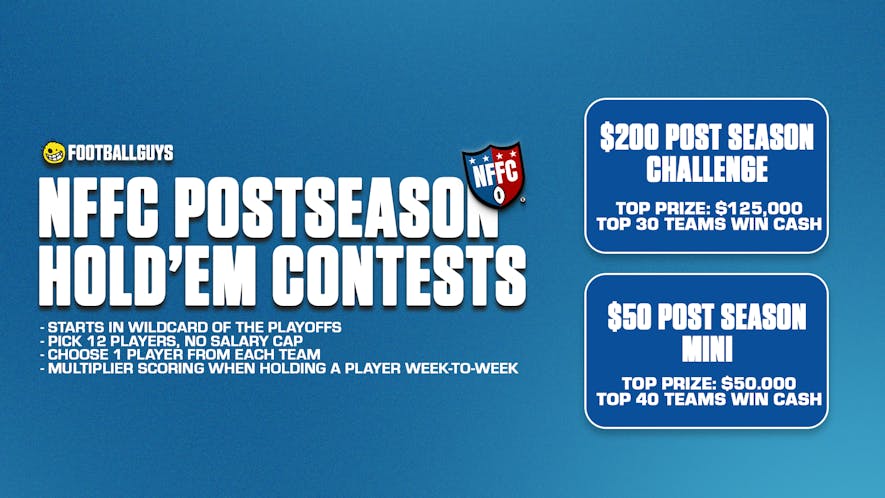Welcome to Regression Alert, your weekly guide to using regression to predict the future with uncanny accuracy.
For those who are new to the feature, here's the deal: every week, I break down a topic related to regression to the mean. Some weeks, I'll explain what it is, how it works, why you hear so much about it, and how you can harness its power for yourself. In other weeks, I'll give practical examples of regression at work.
In weeks where I'm giving practical examples, I will select a metric to focus on. I'll rank all players in the league according to that metric and separate the top players into Group A and the bottom players into Group B. I will verify that the players in Group A have outscored the players in Group B to that point in the season. And then I will predict that, by the magic of regression, Group B will outscore Group A going forward.
Crucially, I don't get to pick my samples (other than choosing which metric to focus on). If I'm looking at receivers and Ja'Marr Chase is one of the top performers in my sample, then Ja'Marr Chase goes into Group A, and may the fantasy gods show mercy on my predictions.
And then, because predictions are meaningless without accountability, I track and report my results. Here's last year's season-ending recap, which covered the outcome of every prediction made in our eight-year history, giving our top-line record (46-15, a 75% hit rate) and lessons learned along the way.
What Is Regression To The Mean
For our first article of the year, I think it's important to define regression to the mean and explain why it is so powerful. I'd like to illustrate this with an example from basketball.
The free throw attempt might be the purest act in all of sports. There's no defense. There's no weather. The distance and angle never change. It is exactly the same every time: one player, one ball, one hoop, one shot.
Steph Curry is the best free-throw shooter in NBA history (he's pretty good at other types of shots, too). For his career, he has converted on 91% of his attempts, but on a game-to-game level, there's a little bit of variance. Imagine that in the opening game of the 2025-2026 season, Curry makes 3 of 6 free throws. (This would be a wildly uncharacteristic game, but it's not impossible; Curry once shot 1-of-4 and has twice gone 4-of-7.)
Nobody in their right mind would look at this game and conclude that Curry was suddenly a 50% free throw shooter, right? Instead, we'd think this game was an outlier and expect him to go back to hitting 91% the rest of the way. Because 91% is Curry's long-term mean (or average), and we expect him to regress (or return) to it.
Steph Curry doesn't make more shots going forward because he's "due". He makes more shots because he's a 91% shooter on free throws. Similarly, if he's coming off a long stretch of consecutive makes, he's likely to miss a few free throws going forward. Not because he's due, but because he's a 91% shooter on free throws. Regardless of what he did last night, we should expect him to make about 91% tonight.
The idea that everyone has a true performance level, deviating from it over short spans for various reasons, yet returning to it over longer spans, is incredibly powerful. It leads naturally to the law of large numbers, the observation that the larger a sample becomes, the more it tends to resemble the underlying probability distribution. For his career, Roger Federer only won 54% of his points-- if professional tennis matches were Sudden Death, Federer would only make it past the second round about 30% of the time.
But you need at least four points to win a game, you need at least six games to win a set, and you need at least two sets to win a match (three sets in the Grand Slam tournaments)-- which means you need a minimum of 48 points (and often many more) to advance in tennis. Which is how, given enough time for any short-term fluctuations to wash out, Federer's 54% point win rate translated into an 80% match win rate.

That's regression to the mean in a nutshell. It's a concept we tend to intuitively understand, even if we don't talk about it in so many words.
What is Regression Alert
This column has four main goals.

